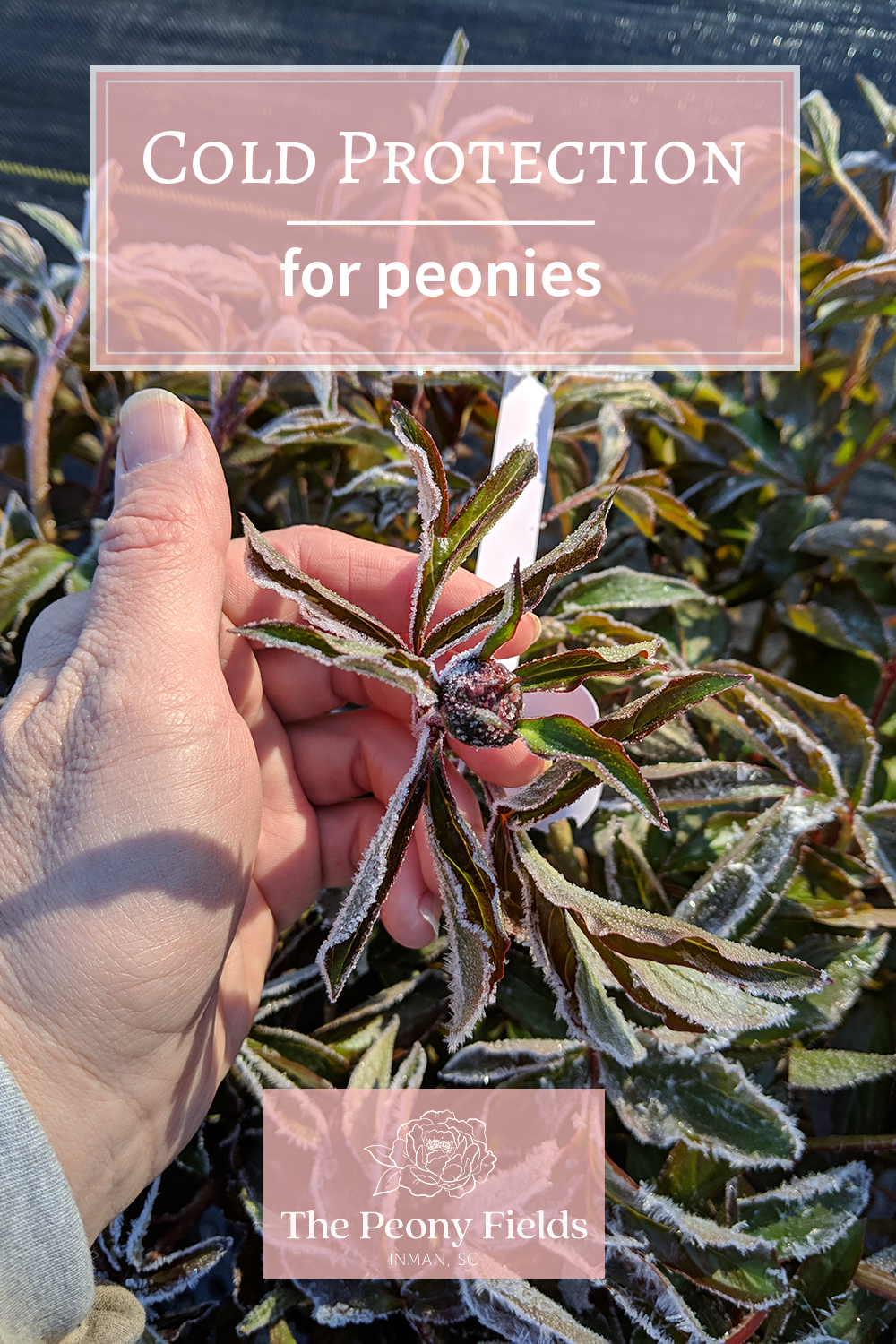Cold Protection for Peonies

You may have heard that peonies love the cold of winter. You may have heard that they need winter's cold temperatures to bloom well the next year. Both of these things are true. But while peonies love the cold of winter, the cold of spring is a bit of a different story.
Where I live, in the South Carolina upstate, spring is a roller coaster ride. After being chilly for months, suddenly the weather will be warm and beautiful for a couple of weeks. But don't put away your winter clothes yet, because cold snaps are almost certainly coming. Many plants, including the peaches for which my town was once famous, take the warm spells as permission to grow and bloom. The cold snaps inevitably follow, decimating those crops unless expensive frost-mitigation measures are taken. Many of the peach growers in my area went out of business because of this devastating cycle.
Luckily, peonies are small enough that we don't have to resort to frost fans or smudge pots. A simple upturned bucket or trash can will do.
When should you deploy your frost-fighting plan?
All winter, peonies love to be out in the cold. Their need to feel the cold is the reason that southern growers plant their roots so shallowly. They have no top growth then, and need no protection from winter's chill. Then, before the frosts truly end, peonies will be poking their heads up and starting to unfurl.
Over the springs I've been working with peonies I've noticed something. Mostly, the plants are very hardy when it comes to frost. Even large plants with buds on them can freeze through. They'll be bent down to the ground, covered with frost, but they'll bounce back when the sun shines in the morning.
But there is stage in their development when they can be damaged easily, especially if the thermometer falls far below freezing. If I had to give an estimate, and this is observation, not science, I'd say the most susceptible time is from about the time they're a couple of inches tall until they're 8 or 10 inches. So this stage:

Before this, when the buds are just swelling or when they're tiny fists at ground level, and after this, when the plants are larger and leafier, they do seem to be more impervious to the cold. But although I've told you what I believe is the most susceptible stage, it would be wisest to cover any sprouted peonies when the temperature is projected to fall below 30 degrees or so.
Freezing at the wrong stage can cause two problems:
Bud blast: Bud blast is when the buds stop growing, turn a sickly sort of mauve-red, and break your heart. Bud blast is caused by several different kinds of stresses to the plant, one of which is freezing at just the wrong stage. Your plant may not bloom this year at all, or some buds may make it and some may not.
Botrytis: Botrytis, also known as gray mold, is a fungus that attacks dead or dying plant tissue and then continues on into living tissue. If your peony plant freezes at a vulnerable stage, the tips can die, inviting this pest to set up housekeeping.
Another concern is that the stems and leaves that peonies produce in the first flush of the season are the only ones it will have all year. The plant doesn't branch when it's cut, doesn't grow more leaves to replace those lost. Fewer leaves to produce energy this year means fewer blooms next, so every one counts.
So how will you protect your plant from these troubles?
Simple. For each peony plant you have, keep a bucket or a trash can on hand, depending on size. If the temperature is projected to fall below about 30 degrees, just cover your plant and place something heavy on the bottom of your container. It's best to go ahead and do this during the middle of the day to trap some of the ground's heat inside the container. The more air inside the container, the better, as it will insulate your plant from the outside chill.
As any gardener with swingy spring weather knows, it can be tedious to cover and uncover plants until the weather settles down. But I've found that nothing helps you forget tedium like a peony plant covered in blooms.

